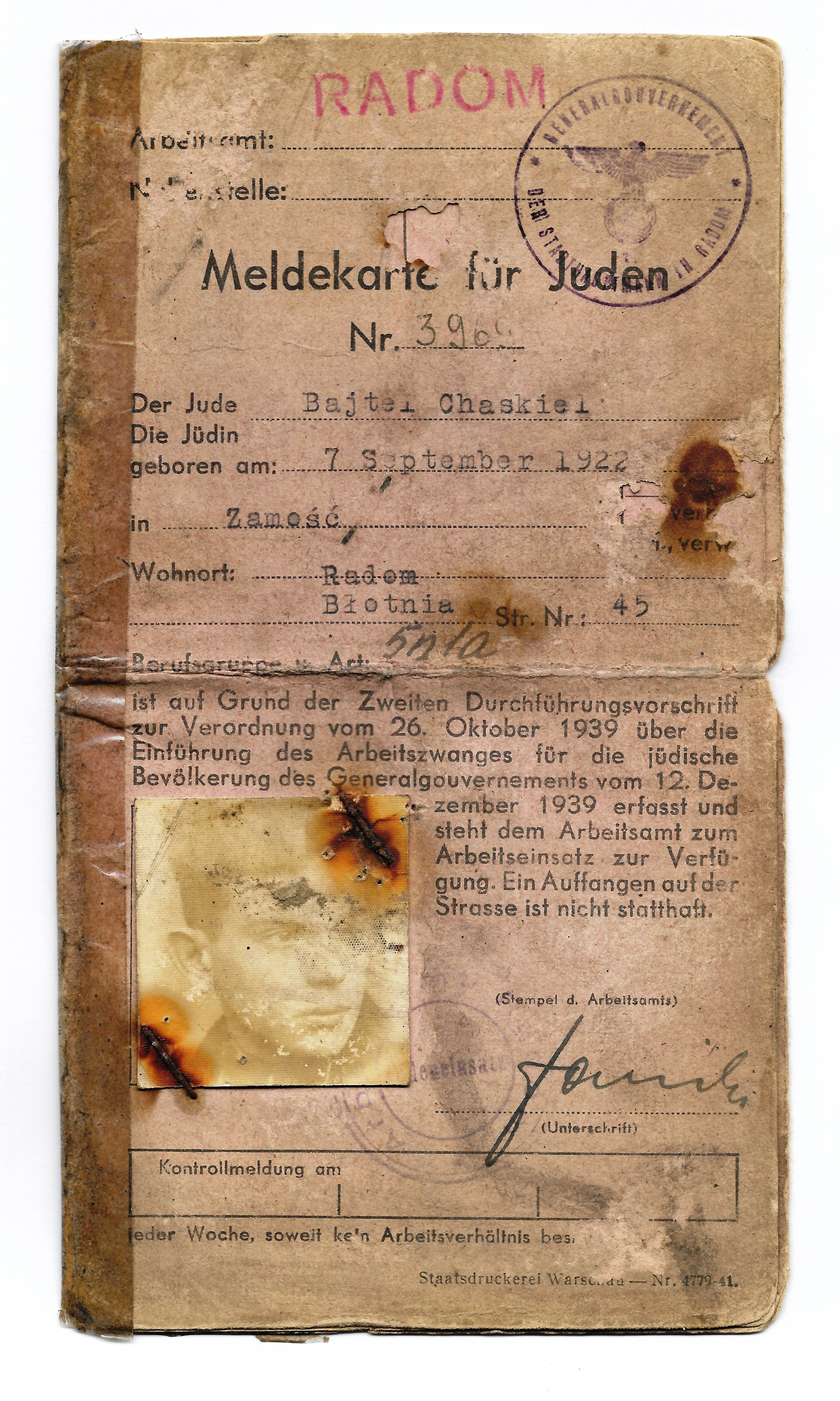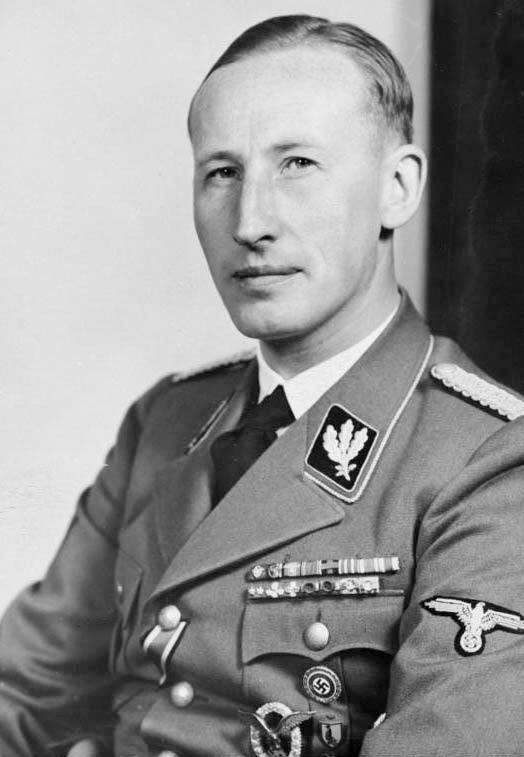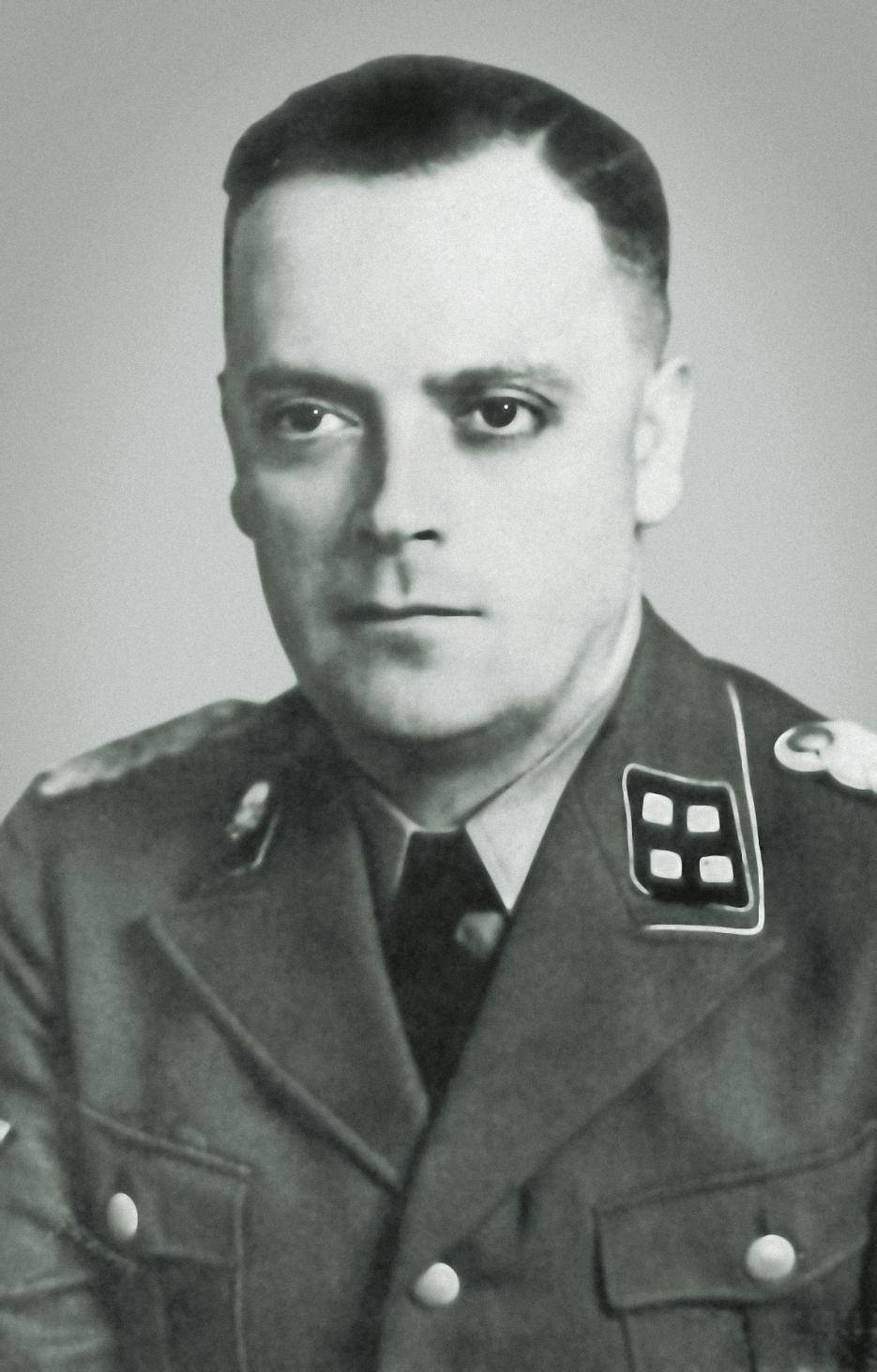|
Majdanek
Majdanek (or Lublin) was a Nazi concentration and extermination camp built and operated by the SS on the outskirts of the city of Lublin during the German occupation of Poland in World War II. It had seven gas chambers, two wooden gallows, and some 227 structures in all, placing it among the largest of Nazi concentration camps. Although initially intended for forced labor rather than extermination, the camp was used to murder people on an industrial scale during Operation Reinhard, the German plan to murder all Polish Jews within their own occupied homeland. The camp, which operated from 1 October 1941 to 22 July 1944, was captured nearly intact. The rapid advance of the Soviet Red Army during Operation Bagration prevented the SS from destroying most of the camp's infrastructure, and Deputy Camp Commandant Anton Thernes failed to remove most incriminating evidence of war crimes. The camp was nicknamed Majdanek ("little Majdan") in 1941 by local residents, as it was adjacen ... [...More Info...] [...Related Items...] OR: [Wikipedia] [Google] [Baidu] |
Majdanek State Museum
The Majdanek State Museum ( pl, Państwowe Muzeum na Majdanku) is a memorial museum and education centre founded in the fall of 1944 on the grounds of the Nazi Germany Majdanek death camp located in Lublin, Poland. It was the first museum of its kind in the world, devoted entirely to the memory of atrocities committed in the network of concentration, slave-labor, and extermination camps and subcamps of ''KL Lublin'' during World War II. The museum performs several tasks including scholarly research into the Holocaust in Poland. It houses a permanent collection of rare artifacts, archival photographs, and testimony. Site After the camp's liberation by the advancing Red Army on 23 July 1944, the site was formally protected. With the war still ongoing, it was preserved as a museum by the autumn of 1944. It remains one the best examples of a Nazi death camp, with largely intact gas chambers and crematoria. The camp became a state monument of martyrology by the 1947 decree of the P ... [...More Info...] [...Related Items...] OR: [Wikipedia] [Google] [Baidu] |
Anton Thernes
Anton Thernes (8 February 1892 – 3 December 1944) was a Nazi German war criminal, deputy commandant of administration at the notorious Majdanek concentration camp on the outskirts of Lublin, Poland in World War II. He was tried at the Majdanek Trials and executed on 3 December 1944, along with five other war criminals, near the gas chambers and the Majdanek crematorium. War crimes Thernes was married with six children in Trier before the Nazi German invasion of Poland. A member of the SS, Thernes served as the last administrative chief of KL Lublin / Majdanek. He was also in charge of food and slave labour administration, starvation rationing, and the maintenance of camp structures including the storage depot for property and valuables stolen from the Holocaust victims at the killing centers in Belzec, Sobibor, and Treblinka.. Thernes was given the task of destroying the evidence of crimes against humanity and genocide, but ran out of time due to his ineptitude and letharg ... [...More Info...] [...Related Items...] OR: [Wikipedia] [Google] [Baidu] |
The Holocaust In Poland
The Holocaust in Poland was part of the European-wide Holocaust organized by Nazi Germany and took place in German-occupied Poland. During the genocide, three million Polish Jews were murdered, half of all Jews murdered during the Holocaust. The Holocaust in Poland was marked by the construction of death camps by Nazi Germany, German use of gas vans, and mass shootings by German troops and their Ukrainian and Lithuanian auxiliaries. The extermination camps played a central role in the extermination both of Polish Jews, and of Jews whom Germany transported to their deaths from western and southern Europe. Every branch of the sophisticated German bureaucracy was involved in the killing process, from the interior and finance ministries to German firms and state-run railroads. Approximately 98 percent of Jewish population of Nazi-occupied Poland during the Holocaust were killed. About 350,000 Polish Jews survived the war; most survivors never lived in Nazi-occupied Poland, but ... [...More Info...] [...Related Items...] OR: [Wikipedia] [Google] [Baidu] |
Extermination Camp
Nazi Germany used six extermination camps (german: Vernichtungslager), also called death camps (), or killing centers (), in Central Europe during World War II to systematically murder over 2.7 million peoplemostly Jewsin the Holocaust. The victims of death camps were primarily murdered by gassing, either in permanent installations constructed for this specific purpose, or by means of gas vans. The six extermination camps were Chełmno, Belzec, Sobibor, Treblinka, Majdanek and Auschwitz-Birkenau. Auschwitz and Majdanek death camps also used extermination through labour in order to kill their prisoners. The idea of mass extermination with the use of stationary facilities, to which the victims were taken by train, was the result of earlier Nazi experimentation with chemically manufactured poison gas during the secretive Aktion T4 euthanasia programme against hospital patients with mental and physical disabilities. The technology was adapted, expanded, and applied in wartime ... [...More Info...] [...Related Items...] OR: [Wikipedia] [Google] [Baidu] |
Operation Reinhard
or ''Einsatz Reinhard'' , location = Occupied Poland , date = October 1941 – November 1943 , incident_type = Mass deportations to extermination camps , perpetrators = Odilo Globočnik, Hermann Höfle, Richard Thomalla, Erwin Lambert, Christian Wirth, Heinrich Himmler, Franz Stangl and others. , participants = , organizations = SS, Order Police battalions, ''Sicherheitsdienst'', Trawnikis , camp = BelzecSobiborTreblinka Additional: ChełmnoMajdanek Auschwitz II , ghetto = European and Jewish ghettos in German-occupied Poland including Białystok, Częstochowa, Kraków, Lublin, Łódź, Warsaw and others , victims = Around 2 million Jews , survivors = , witnesses = , documentation = , memorials = On camp sites and deportation points , notes = This was the most lethal phase of the Holocaust. Operation Reinhard or Operation Reinhardt (german: Aktion Reinhard or ; also or ) was the codename of the secret Ger ... [...More Info...] [...Related Items...] OR: [Wikipedia] [Google] [Baidu] |
The Holocaust
The Holocaust, also known as the Shoah, was the genocide of European Jews during World War II. Between 1941 and 1945, Nazi Germany and its collaborators systematically murdered some six million Jews across German-occupied Europe; around two-thirds of Europe's Jewish population. The murders were carried out in pogroms and mass shootings; by a policy of extermination through labor in concentration camps; and in gas chambers and gas vans in German extermination camps, chiefly Auschwitz-Birkenau, Bełżec, Chełmno, Majdanek, Sobibór, and Treblinka in occupied Poland. Germany implemented the persecution in stages. Following Adolf Hitler's appointment as chancellor on 30 January 1933, the regime built a network of concentration camps in Germany for political opponents and those deemed "undesirable", starting with Dachau on 22 March 1933. After the passing of the Enabling Act on 24 March, which gave Hitler dictatorial plenary powers, the government began isolating Je ... [...More Info...] [...Related Items...] OR: [Wikipedia] [Google] [Baidu] |
Martin Gottfried Weiss
Martin Gottfried Weiss, alternatively spelled Weiß ( – 29 May 1946), was the commandant of the Dachau concentration camp in 1945 at the time of his arrest. He also served from April 1940 until September 1942 as the commandant of Neuengamme concentration camp, and later, from November 1943 until May 1944, as the fourth commandant of Majdanek concentration camp. He was executed for war crimes. Life Weiss was born in Weiden in der Oberpfalz. His father worked for the Royal Bavarian State Railways. He had two sisters and was raised as a Catholic. After school he continued his education at a mechanical engineering school in Landshut. He finished school in 1924 and worked as intern in an ironworks. Later he worked for about three and a half years for the Upper Palatine electric company. In the summer of 1926 he joined the Nazi Party and founded a chapter of the SA and of the HJ with two friends in Weiden. Later he studied electrical engineering in Bad Frankenhausen, finishing ... [...More Info...] [...Related Items...] OR: [Wikipedia] [Google] [Baidu] |
Karl-Otto Koch
Karl-Otto Koch (; 2 August 1897 – 5 April 1945) was a mid-ranking commander in the ''Schutzstaffel'' (SS) of Nazi Germany who was the first commandant of the Nazi concentration camps at Buchenwald and Sachsenhausen. From September 1941 until August 1942, he served as the first commandant of the Majdanek concentration camp in occupied Poland, stealing vast amounts of valuables and money from murdered Jews. His wife, Ilse Koch, also took part in the crimes at Buchenwald and Majdanek. Life Koch was born in Darmstadt, Grand Duchy of Hesse-Darmstadt on 2 August 1897. His father worked in a local registrar's office and died when Karl was eight years old. After completing elementary school in 1912, Koch attended Mittelschule and completed a commercial apprenticeship. In 1916, he volunteered to join the Imperial German Army and fought on the Western Front until he was later captured by the British. Koch spent the rest of the war as a POW and returned to Germany in 1919. As a s ... [...More Info...] [...Related Items...] OR: [Wikipedia] [Google] [Baidu] |
Hermann Florstedt
Arthur Hermann Florstedt (18 February 1895 – 15 April 1945), member of the NSDAP, was a German SS commander, war criminal and convicted war profiteer. He became the third commander of Majdanek concentration camp in October 1942. Florstedt was convicted of corruption and executed by the regime in April 1945. World War II Florstedt joined the SS in 1933 achieving the rank of Standartenführer in 1938. He served at the Sachsenhausen concentration camp from 1940 till 1942. He was appointed the third chief of Majdanek extermination camp in October 1942 to replace ''SS-Sturmbannführer'' Max Koegel. Florstedt was investigated by SS Judge Georg Konrad Morgen and charged by the ''Schutzstaffel'' (SS) with embezzlement and arbitrary killing of prisoner witnesses. Florstedt was one of two Majdanek commandants put on trial by the SS in the course of the camp operation. He was charged with corruption (wholesale stealing from the Third Reich); he had access to valuables stolen from ... [...More Info...] [...Related Items...] OR: [Wikipedia] [Google] [Baidu] |
Gas Chamber
A gas chamber is an apparatus for killing humans or other animals with gas, consisting of a sealed chamber into which a poisonous or asphyxiant gas is introduced. Poisonous agents used include hydrogen cyanide and carbon monoxide. History General Rochambeau developed a rudimentary method in 1803, during the Haitian Revolution, filling ships' cargo holds with sulfur dioxide to suffocate prisoners of war. The scale of these operations was brought to larger public attention in the 2005 book '' Napoleon's Crimes'', although the allegations of scale and sources were heavily questioned. In America, the utilization of a gas chamber was first proposed by Allan McLane Hamilton to the state of Nevada. Since then, gas chambers have been used as a method of execution of condemned prisoners in the United States and continue to be a legal execution method in three states, seeing a possible, legislated reintroduction, although redundant in practice since the early 1990s. Lithuania ... [...More Info...] [...Related Items...] OR: [Wikipedia] [Google] [Baidu] |
Max Koegel
Otto Max Koegel (16 October 1895 – 27 June 1946) was a Nazi officer who served as a commander at Lichtenburg, Ravensbrück, Majdanek and Flossenbürg concentration camps. Life Max Koegel was born on 16 October 1895 in Füssen, in the Kingdom of Bavaria. He was the fourth son of a carpenter who worked at a local furniture factory. Shortly before his sixth birthday, Koegel's mother died from complications during childbirth. In 1907, his father died and Max was sent to live with a family at a nearby farm. He also had to leave school and began training as a shepherd and later worked as a mountain guide. When the First World War broke out, Koegel volunteered to join the Bavarian infantry. He served in the military until 12 January 1919 and reached the rank of corporal. He was wounded three times, including once during the Battle of Verdun, and received the Iron Cross second class. After the war, Koegel returned to Bavaria and worked as a customs clerk in Garmisch-Partenkirchen. ... [...More Info...] [...Related Items...] OR: [Wikipedia] [Google] [Baidu] |
Arthur Liebehenschel
Arthur Liebehenschel (; 25 November 1901 – 24 January 1948) was a commandant at the Auschwitz and Majdanek concentration camps during the Holocaust. After the war, he was convicted of war crimes by the Polish government and executed in 1948. SS career Liebehenschel was born on 25 November 1901 in Posen (now Poznań). He studied economics and public administration. Too young to serve in World War I, in 1919 he enrolled in the '' Freikorp "Grenzschutz Ost"''; he served as a sergeant major in the German armed forces (''Reichswehr'') afterwards. In 1932, he joined the Nazi Party and in 1934 the SS, where he served in the '' Death's Head Units''. Liebehenschel became the adjutant in the Lichtenburg concentration camp, and two years later was transferred to the Concentration Camps Inspectorate in Berlin. In 1942, when the SS Main Economic and Administrative Office was founded, Liebehenschel was assigned to the Department D (Concentration Camps) as head of DI (Central Office). On ... [...More Info...] [...Related Items...] OR: [Wikipedia] [Google] [Baidu] |







